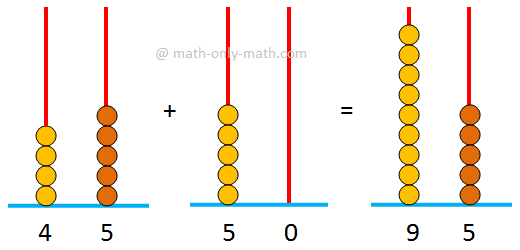If Each Diagonal of a Quadrilateral Divides it in Two Triangles of Equal Area then Prove that the Quadrilateral is a Parallelogram
Here we will prove that if each diagonal of a quadrilateral divides it in two triangles of equal area then prove that the quadrilateral is a parallelogram.
Solution:
Given: PQRS is a quadrilateral whose diagonals PR and QS cut at O such that
ar(∆PQR) = ar(∆PSR), and
ar(∆PQS = ar(∆QRS).
To prove: PQRS is a parallelogram.
Proof:
|
Statement 1. ar(PQR) = ½ ar(quadrilateral PQRS). 2. ar(PSQ) = ½ ar(quadrilateral PQRS). 3. ar(PQR) = ar(PSQ) 4. SR ∥ PQ. 5. QR ∥ PS. 6. PQRS is a parallelogram. (Proved) |
Reason 1. Given, ar(∆PQR) = ar(∆PSR). 2. Given, ar(∆PSQ) = ar(∆QRS). 3. From statements 1 and 2. 4. ∆PQR and ∆PSQ are of equl area on the same base PQ. 5. Similarly with PS as base. 6. From statements 4 and 5. |
From Diagonal of a Quadrilateral Divides it in Two Triangles of Equal Area to HOME PAGE
Didn't find what you were looking for? Or want to know more information about Math Only Math. Use this Google Search to find what you need.
Recent Articles
-
5th Grade Factors and Multiples | Definitions | Solved Examples | Math
Mar 23, 25 02:39 PM
Here we will discuss how factors and multiples are related to each other in math. A factor of a number is a divisor which divides the dividend exactly. A factor of a number which is a prime number is… -
Adding 2-Digit Numbers | Add Two Two-Digit Numbers without Carrying
Mar 23, 25 12:43 PM
Here we will learn adding 2-digit numbers without regrouping and start working with easy numbers to get acquainted with the addition of two numbers. -
Worksheet on 12 Times Table | Printable Multiplication Table | Video
Mar 23, 25 10:28 AM
Worksheet on 12 times table can be printed out. Homeschoolers can also use these multiplication table sheets to practice at home. -
Vertical Subtraction | Examples | Word Problems| Video |Column Method
Mar 22, 25 05:20 PM
Vertical subtraction of 1-digit number are done by arranging the numbers column wise i.e., one number under the other number. How to subtract 1-digit number vertically? -
Worksheet on 11 Times Table | Printable Multiplication Table | Video
Mar 22, 25 05:08 PM
Worksheet on 11 times table can be printed out. Homeschoolers can also use these multiplication table sheets to practice at home.






New! Comments
Have your say about what you just read! Leave me a comment in the box below. Ask a Question or Answer a Question.